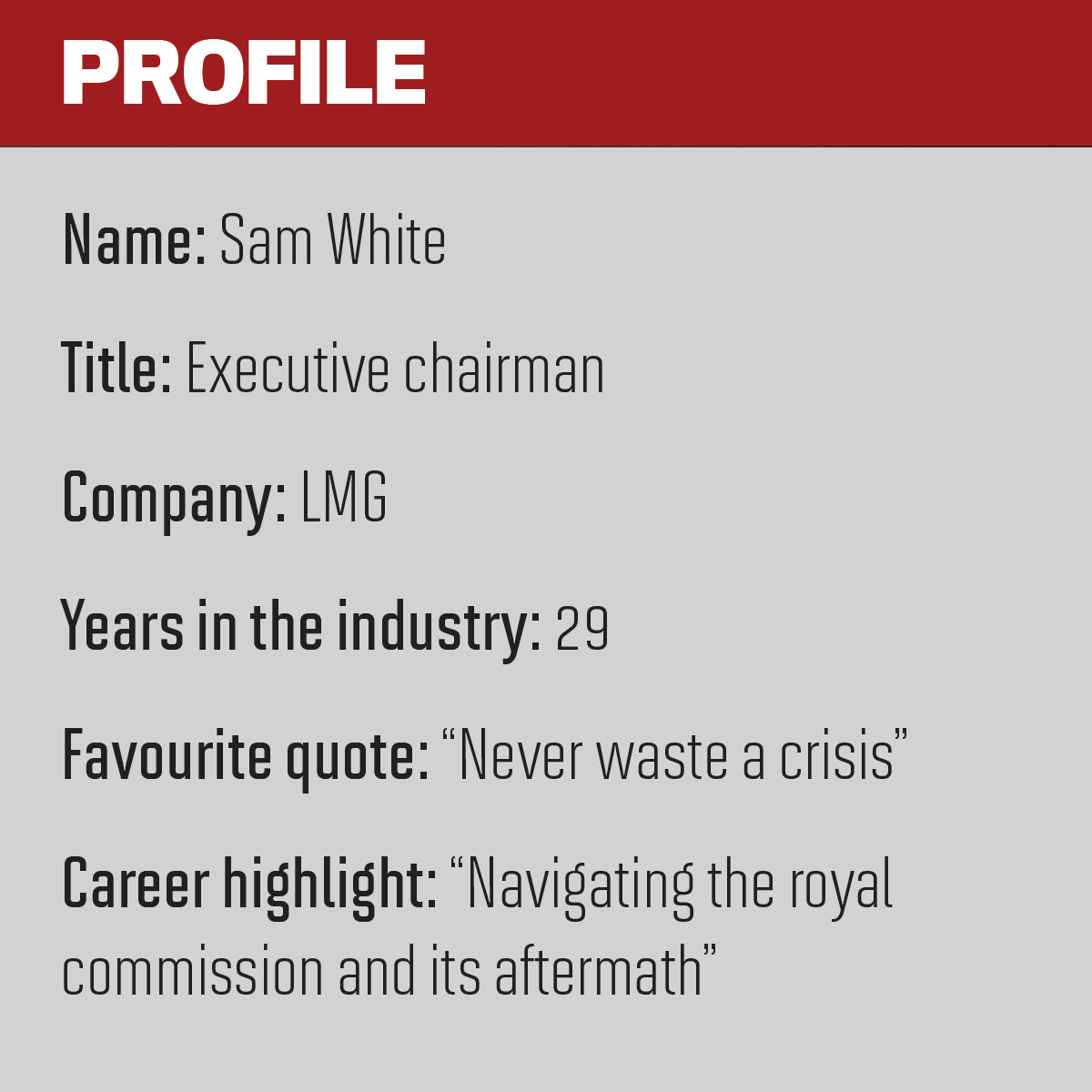Reform is needed, says LMG executive

Nobody likes to have their hard-earned money taken off them, so it’s no surprise brokers get upset over commission clawbacks.
Sam White is a widely respected leader in the mortgage industry, and as the head of Australia and New Zealand’s largest aggregator, LMG, he has some firm views about clawback.
“I know how painful clawbacks are for brokers, particularly at the current levels,” says White.
“My view is that clawback is the downside of our commission structure and that brokers are better off with the current remuneration model, which incorporates clawback, than with the alternatives that would be canvassed if clawbacks were abolished. However, clawback policy desperately needs reform, and I’m pushing for that.”
 White realises that many brokers want clawback abolished.
White realises that many brokers want clawback abolished.
“I recognise that in many cases clawbacks unfairly punish brokers for changes outside of their control. I know that brokers have done the work and don’t know for up to two years whether they will keep their pay or have to hand it back, and that it produces a lot of stress and anxiety.
“These are all good reasons to fight for an abolition of clawback. However, I feel that if this were to happen, whilst some of these problems would be solved, other problems would be created and brokers would be worse off.”
LMG brokers are also no fans of clawback; “all of us want to see less of them”, says White.
“Many of our brokers want clawback abolished, and they make the assumption that if it gets abolished, nothing else would change,” he says. “When I point out that this may not be the case, I believe most understand that clawback reform is what we need rather than clawback abolition.”
Historically, LMG data shows that clawbacks have affected about 5–6% of brokers’ upfront revenue.
White says that interestingly, in FY23 that figure surged to 11%, which he attributes directly to the cashback incentives that lenders introduced.
“But as the cashback incentives wane, while I don’t have a crystal ball, I anticipate a reversion to the long-term level.”
White says clawback reform is essential.
“The model I advocate for resembles Bankwest’s, where clawback is spread over 18 months in even monthly instalments. I would like to see that period reduced to 12 months.
“It’s challenging to convince lenders when clawback rates are at a current high of 11%; however, I believe they will be more recep- tive if clawback rates return to their long-term averages.”
So, what does White think might happen if clawback was abolished?
“If clawbacks disappear, everything goes back on the table,” he says. “I think the concern from lenders would be that the average life of a broker loan may reduce and that the economics of the channel would change.”
White says this could impact brokers’ remuneration model.
“It could potentially shrink brokers’ loan books, making them less valuable. Additionally, there’s a risk that lenders will not want to deal with brokers whose clients frequently refinance,” he says.
“This means brokers could lose their accreditation due to no fault of theirs. Our proposal is to lobby lenders to reduce the clawback process to a 12-month period.”
A number of banks have modified their clawback policies, but White says more change is required.
“Some lenders have made changes, but they’re insufficient. Bankwest’s 18-month policy is a step in the right direction, offering a more balanced approach. But a 12-month straight-line amortisation would best serve brokers and lenders. The industry requires a clawback system that values the work brokers do for their clients, and we’ve been vocal on that.”
White shares some tips for brokers on managing clawback, including the need to stay focused on creating value for their clients.
“It’s crucial to have an upfront chat with clients about your remuneration model and the implications of clawbacks, and maintain open and proactive communication.
“Staying in touch with clients post settlement is critical so that you retain the client if their circumstances change. And from an operational standpoint, setting aside about 5% of cash flow can help offset unpredicted clawbacks.”
Looking at global models on broker remuneration and clawback, White says New Zealand is largely a fixed-rate market. “Their clawback spans 27 months, and brokers can charge clients a clawback fee, unlike here.
“In the UK, there is no clawback, but the price is that brokers are paid 0.4% of the loan amount and no trail. Many UK brokers rely on insurance sales, and some charge clients direct fees.”
He says the head of the banking royal commission, Kenneth Hayne, recommended adopting the Dutch model.
“However, the Dutch brokers I have met said that the interest rate clients paid the day before the change was the same they paid the day after – all that changed was the clients now paid a new broker or lender fee.”
“The model means Australian brokers don’t need to advise clients to move to a new lender to get paid. The downside of our model is clawback, and it is intertwined with other elements of our remuneration model – a model that works best for customers.”
White says the Australian remuneration model works for customers, lenders and brokers.
“We need clawback reform, not clawback abolition. The Bankwest model, where there is a straight-line amortisation over 18 months, is the fairest structure, although we would like to see lenders move to reduce that to 12 months.”
He says the industry needs to collaborate on this and related issues to maintain a competitive landscape that benefits consumers.
“I welcome conversations with our associations, brokers and lenders on this important issue.”



